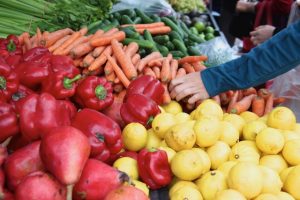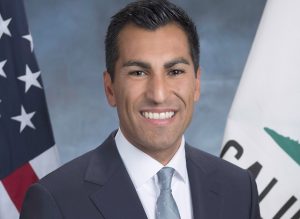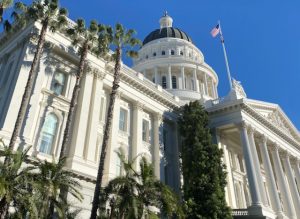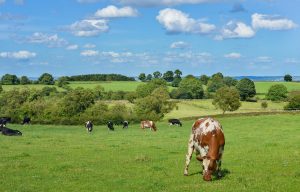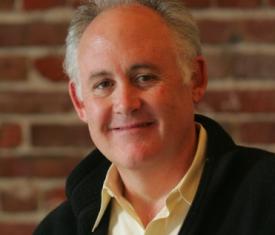
Opening Remarks, 2010 ROC Network Summit
October 5, 2010 Michael R. Dimock Wow, so this is so exciting for me and for the ROC team. By team I mean the Council, the Staff and our group of consultants. This event culminates years of work, four years really. I want them all to stand so that you know who you should complain to if it’s not going well. No actually, I want you to see a very intelligent, hard working, collaborative, communicative bunch, a crack team. It is a small team given the mission, but a lot gets done.
Wow, so this is so exciting for me and for the ROC team. By team I mean the Council, the Staff and our group of consultants. This event culminates years of work, four years really. I want them all to stand so that you know who you should complain to if it’s not going well. No actually, I want you to see a very intelligent, hard working, collaborative, communicative bunch, a crack team. It is a small team given the mission, but a lot gets done.
(Introduces staff, consultants and Stewardship Council members)
We also have some very special guests and important allies in the room: Secretary of Food and Agriculture, AG Kawamura and former Deputy Secretary Robert Tse. Also, The USDA Deputy Secretary for Rural Development, Cheryl Cook, and the California Director of Rural Development for USDA, Glenda Humiston. And of course, the distinguished and always constructive Gus Schumacher, who was Under Secretary at USDA for President Clinton and is today our man in Washington DC, and we are proud of that Gus. You have done great service to the entire good food movement.
But of course everyone in this entire room is actually distinguished people by their important work in this State to transform food and farming. We invited you here because we feel you are integral to success in our common effort. You are working in neighborhoods, in food companies, distribution, and retail stores, in academe, in school districts, on campuses, in legislative bodies and government agencies, on farms and ranches, in hospitals, in kitchens, in economic development agencies, foundations, banks and other financial institutions. We are all here because without all of us being involved, we cannot succeed.
Some of you are attending a ROC meeting for the first time and some are veterans. So I am curious. Who in this room was some how involved in the Vivid Picture project? Raise your hand. How many in either the CRAE or the Ag Future’s Alliances? Who attended a 2007 ROC kick-off tour meeting, 1 of 5 or 6? Who is a ROC Fellow 07, 08-09 or 10? Anybody attend 2008 Changemakers Day at Slow Food Nation? How about the 2009 Sustainable Foodshed Summit in Oakland where Mayor Gavin Newsom announced San Francisco’s sustainable Food Policy? Who participated in either the San Francisco or LA Urban-Rural Roundtables? Okay, who is attending their first ROC event. Nice to see the veterans and the newbie’s in this room.
But why is it nice? For me it is because your presence reveals an opportunity that is some ways I have hoped to see since 1992 when I joined the Staff of Select Sonoma County to build the nation’s first regional branding program not focused on wine. This hope is what actually led me to found Ag Innovations around the same time. Or later when I jumped off the abyss into Slow Food and founded the Russian River Convivium in Sonoma County in 1996. And most recently when I took my current position at ROC in 2006.
In all those moments I have been driven by the belief that in working on food and farming, we could heal a couple of huge rifts associated with being human. One is the rift between humans and nature, like the one described in the book Ishmael, for any of those who have read it, the rift born of the belief that we are separate from nature. The other is the rift among our peoples; the many rifts really, between one group of humans and another, based on race, income, religion, region, and politics.
I think the food system is a Petri dish for developing an antibiotic or potion to heal the rifts. The challenges in food and farming have the potential to bring our species to a new level of collaboration and cooperation, a level that is absolutely required if we are to actually solve the momentous social and ecological challenges faced. Over the weekend, I met with a man named Nicola Rossi. We were harvesting wine grapes in the Dry Creek Valley of Sonoma County at harvest party. Nicola is a renown economist in his country. He is in the Italian Senate representing Puglia. He is a thinker, a kind of Italian sage on economics and politics. Some believe he could be Italy’s next President if Mr. Berlusconi ever falls.
As we harvested, then ate and drank wine, we agreed that we live in a time that has many characteristics in common with the dark ages. Maybe it was the wine. However, in the moment…. No actually, there is merit in the comparison. That time was a period where power devolved from the great central power of Rome to more regional power and governance. There was chaos, but there was creativity. There was suffering, but there was a move to new thinking that eventually led to the Renaissance. Within the Renaissance, were seeds of the epoch in which we now live, the good and the bad. The sciences and technologies that we enjoy emerged from that period of individual investigation and empowerment and regional autonomy.
We are in some ways in a new dark age. The bleak set of problems before us requires a quantum leap in thinking and creativity. The inability of State and Federal government to act with clear majorities to overcome polarization is forcing local government to become the linchpin to governance, we are forcing power downward. Christorpher Alexander, author of A Pattern Language and A Timeless Way of Building would like this devolution down of governance because he and his colleagues who study they humans best interact think that a regional government of 2-5 million with ecologically-based boundaries is optimum. But only in rare cases do we have such a pattern of governance.
To solve our problems given our governance challenges, we need to make a leap; we need to actually create heat, friction among ourselves; it is the pressure that creates the diamond; the compression, the power of the engine. I mean that innovation comes from real conundrums. I think food deserts, nitrogen pollution, and the plight of farm and food workers, and the uneven global marketplace in food provide the conundrums we need to innovate.
One sure way to create heat or friction is to work together closely. Ag Innovations and ROC have been running an experiment for a couple of years where we have worked to integrate information and thinking, to learn from one another and tie one another into work. We have also done it with the California Farmers Market Consortium, in which now 8 NGOs have formed a learning community that shares best practices and information in order to increase their collective impact by improving their individual execution of plans.
So who here thinks it is easy to collaborate and work together, particularly with organizations outside your own?
As Joseph often points out, it is easy to do stakeholder consensus building compared to stakeholder collaboration on actual projects. Money, ego, power, principles, can all get in the way.
I posit that the times require that we challenge ourselves to better collaborate. And ROC is dedicated to building the power of the movement for healthy food and agriculture. We don’t know exactly how to get to the next stage, but we have some ideas, and we’ve begun forging some tools that need more work and we’ve formed some new relationships that need more development, but we believe they could be transformative if others see their utility, their potential and join with us in honing them and then using them.
This Summit meeting is about the tools and new relationships and the potential new levels of collaboration that could develop to ensure that in this State we form supper majorities of populations in regions all over the state, and thus statewide, to unleash the cultural commitment and action required to actually create a sustainable food system, meaning a system that is restorative, diversified and distributed across the landscape.
Restorative means leading to optimum health and resilience in a human, an ecosystem or a community. Restorative is the opposite of depletive, which is really about net erosion of the health and resilience of humans, ecosystems, and communities.
So before I conclude I want you to take about 2 minutes in a moment of quiet and think about your work today that is restorative. What actions do you take at your NGO or agency and what practices do you use on your farm or in your business that over time would lead to optimum health and resilience. Go ahead think for a brief time, write these actions or practices down on paper and I will call you back and make the transition to the next segment.
(2 minute time to think)
Okay good. You will need that later today.
The speakers, the breakouts, the platform are an invitation to dig in and create some healthy heat that will render a Statewide coalition with a spectrum of opinion, but with a common goal and flexibility, and the intelligence to deal with complexity, contradiction, and human foibles. We want to work with you to form that coalition.
To begin today’s work, let us look at a map, because every journey, every campaign, every search for buried treasure begins with a map. And we have one to share that was developed by many of you in this room!
